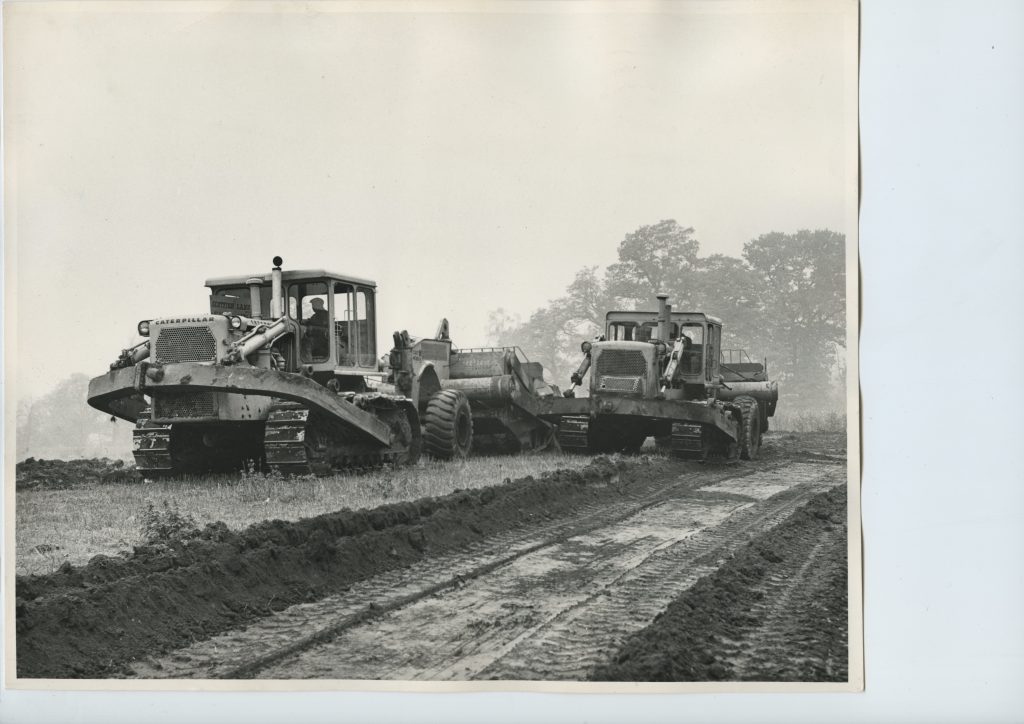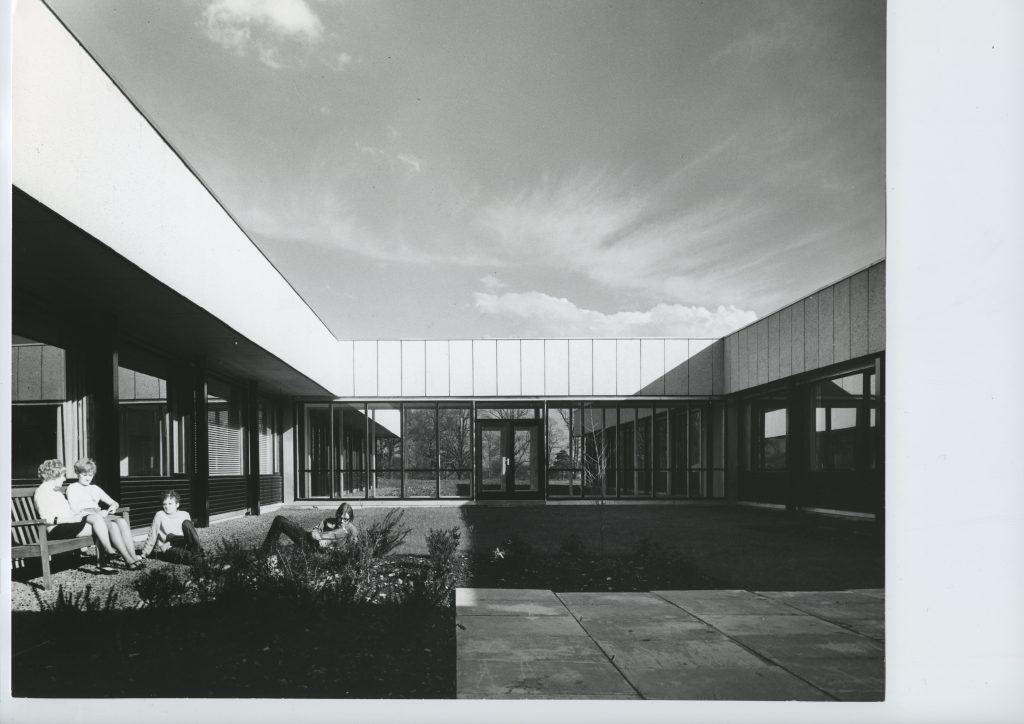This week’s #BeConnected Explore Our Campus looks at the history of the Pathfoot Building, home to the Art Collection and the first building on the left as you enter campus.
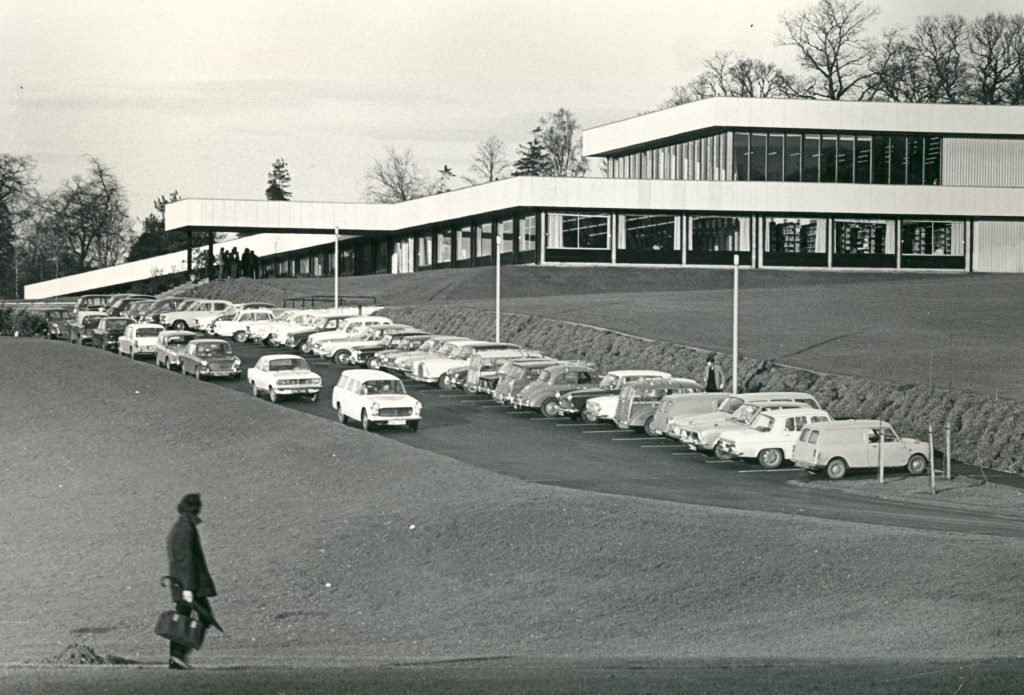
The University of Stirling was built on 330 acres of land within the grounds of Airthrey Estate, beneath the Ochil Hills two miles from Stirling itself and close to the Bridge of Allan. The campus was the first new university to be built in Scotland for almost 400 years. This followed the Robbins Report (1963), drawn up by Lord Robbins, who recommended an expansion of universities across the UK, and became the University’s first Chancellor in 1968.
The Stirling site was selected in 1965 from a shortlist that included Falkirk and Perth. Pathfoot was built in the first phase of a thoroughly modern development. Constructed in 1967, it was the first building to be completed on the new campus and is now a listed building. With its wide-open spaces giving a countrified feel, the landscape surrounding the University already provided a natural canvas. Though Lord Robbins recalled he had reservations when he visited the campus during the initial building stages.
I was overcome by the beauty of the setting… the most enchanting setting for a campus anywhere in the island. But the first piles of the Pathfoot Building were being dug. There was much mud about. It was very messy and as I looked around I could not repress the thought, Can it be that I have become Chancellor of a University which is going to ruin this marvellous landscape?
No reflection could have been more inappropriate. The Pathfoot Building has won world-wide commendations as an outstanding exhibition of what the best of modern architecture can do if it pays attention to the nature of the setting.
Lord Robbins speaking at the opening of the Pathfoot Building in 1967
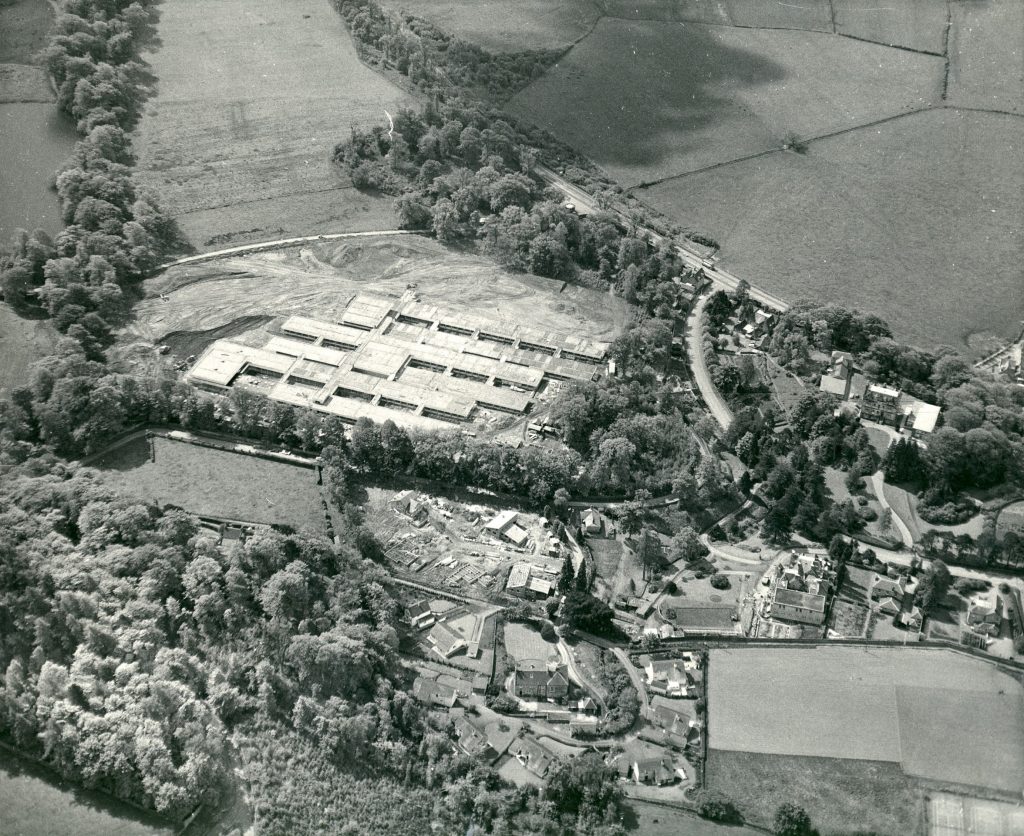
Stirling is one of the so-called ‘plate glass’ universities. The name reflects the large amounts of glass used in many of the designs. The functional minimalist style used had first emerged during the 1930s and became dominant after the Second World War. In Pathfoot, the design responds elegantly to its sloped hillside setting, with a series of low-rise stepped levels and multiple glazed internal courtyards, merging inside with out.
With a planned opening date of September 1967, time was of the essence for selected architects Robert Matthew Johnson-Marshall (RMJM). Their first task was to create a preliminary building, housing all teaching and research, until the rest of the campus was ready. Pathfoot was therefore designed as a building of flexible use, which accommodated the needs of the present whilst permitting change in the future.
Pathfoot was planned as a series of parallel single-storey ‘strips’ of building, with a gap 36 feet wide between each strip. Rising up the hill, the strips formed a series of terraces. Internally, each had a central spine corridor with 36 feet of space to either side. Connecting the strips at right angles were linking corridors, which as they crossed the open gaps between the strips created internal landscaped courtyards. These courtyards as well as being pleasant in themselves, also allow natural daylight and ventilation to reach the building interior.
RMJM had developed a particular interest in standardised prefabricated construction in earlier projects and at Stirling this resulted in a steel-framed structure with infill panels of timber. Predominantly plate glass with long rectangular red pine casement windows, the Pathfoot Building design echoed the horizontality and simple concrete panelled forms of the Commonwealth Pool in Edinburgh, also designed by RMJM. Of particular inspiration to the architects was the Louisiana Museum of Modern Art just outside Copenhagen (1958). The importance of the building design was recognised in 2009 when it became a Category A listed building.
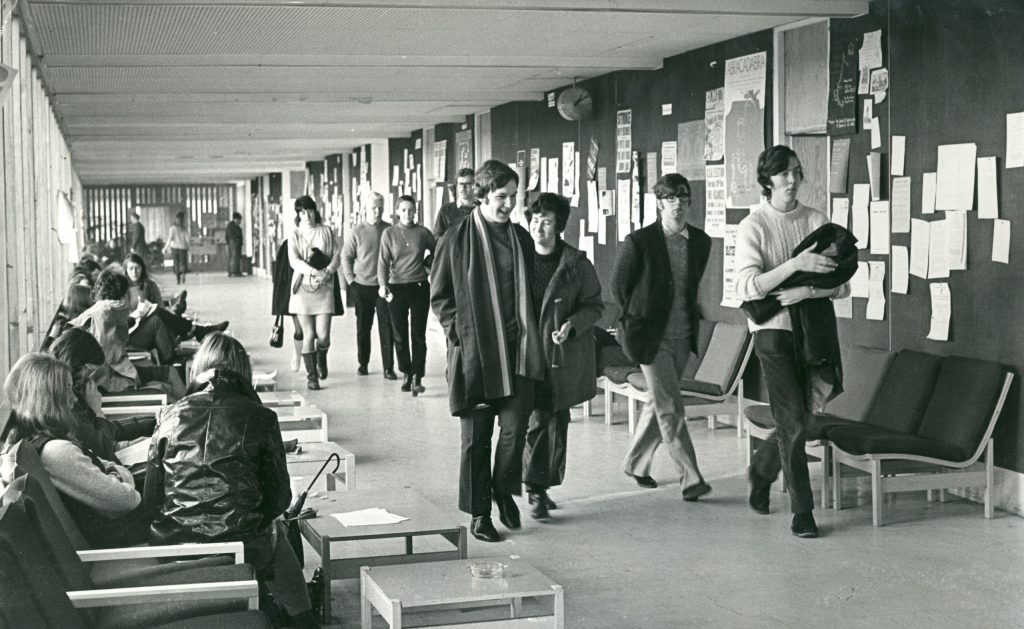
In its first three years the 120,000 square feet of floor space was to house staff rooms in all subjects, undergraduate laboratories, lecture rooms, library, restaurant, common rooms and administration offices, while extensions in 1979 to house a tropical aquarium and in 1987 for a virology unit saw it widen its remit. The Pathfoot building itself is a work of art, with international conservation organisation DoCoMomo recognising it in 1993 as one of sixty key Scottish monuments of the post-war era. It was also voted as one of Prospect magazine’s 100 best modern Scottish buildings, and now has Category A listed status.
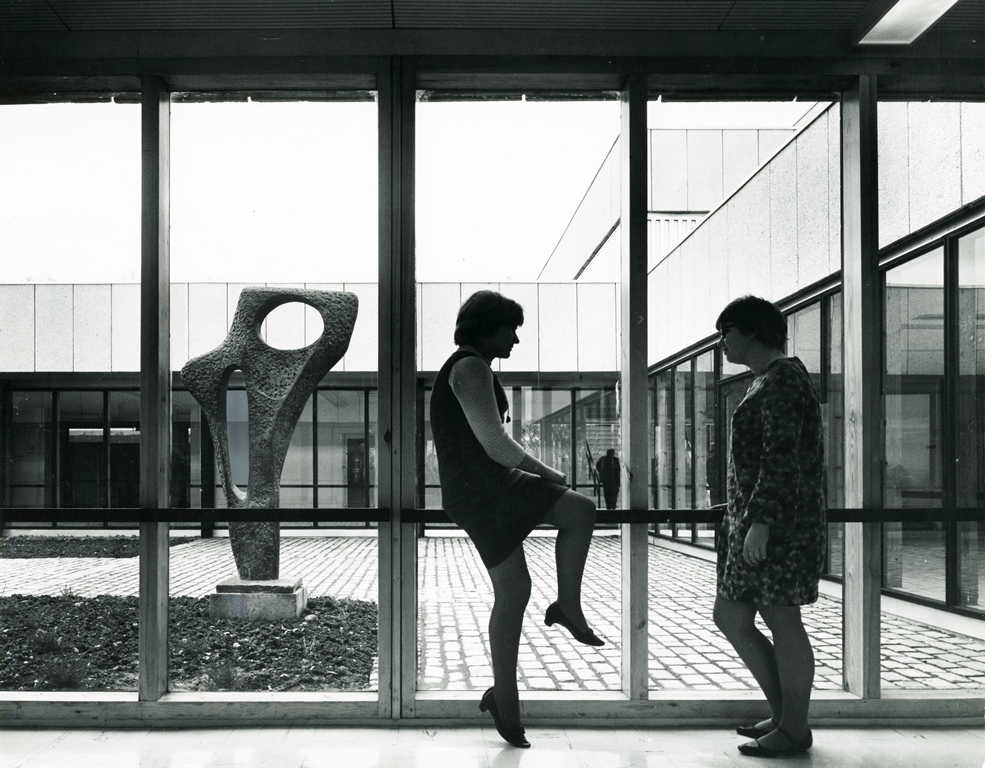
In keeping with the liberal sensibilities of the 60s, the Art Collection was initiated from the start, with the University’s founding Principal Tom Cottrell insisting that art ‘should be part of everyday life on campus.’ With work displayed in the Pathfoot building’s iconic Crush Hall and the surrounding courtyards, the Art Collection has played a vital role in University life ever since.

Image by Julie Howden
Even though the Pathfoot Building has been altered and extended over the years, the spirit of the original design remains, and is appreciated by those who visit, study and work there.
You can also view Stirling student Pierre Engelhard’s interactive video of the Pathfoot building and its artworks.
In the 50th anniversary year Ally Wallace was the Art Collection’s Artist in residence. Ally created films about the Pathfoot building including this one by our curator Jane Cameron.
Details of Ally’s residency and more films can be found on his website https://www.allywallace.co.uk/About
